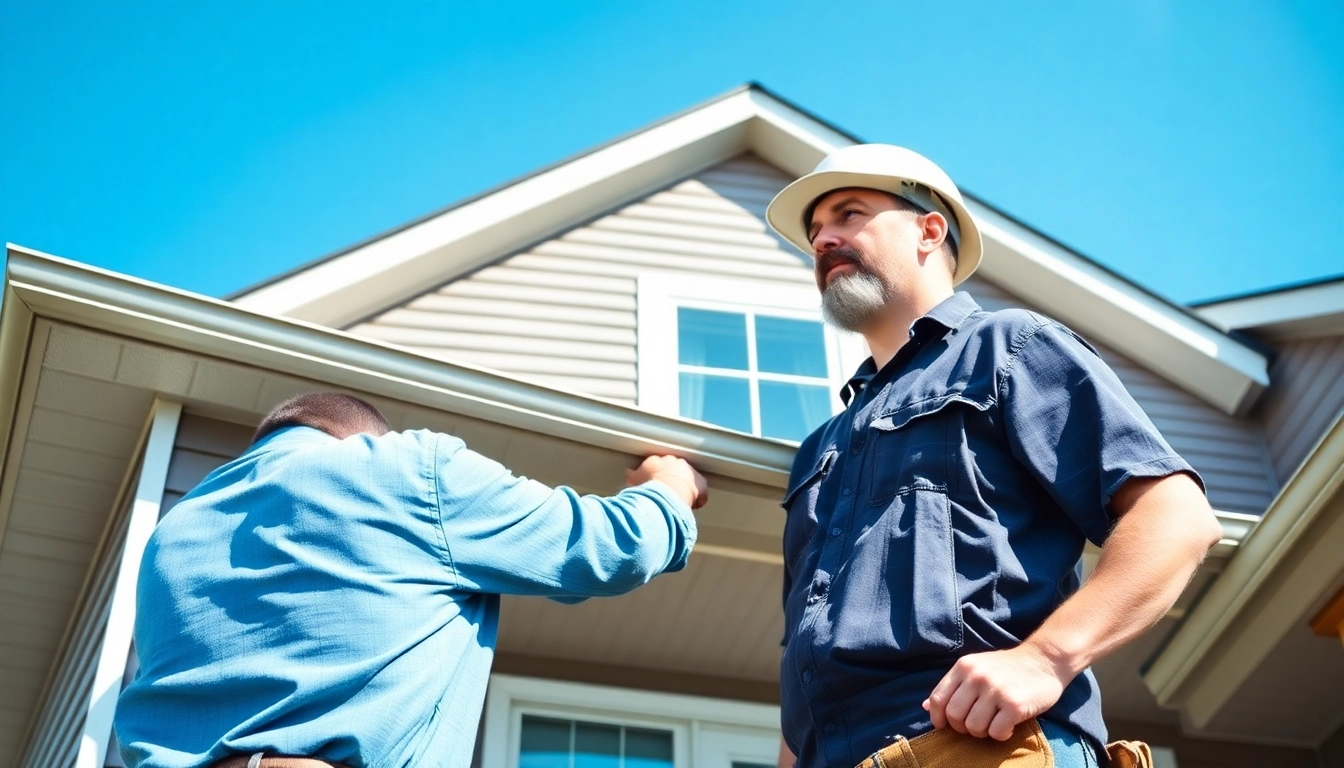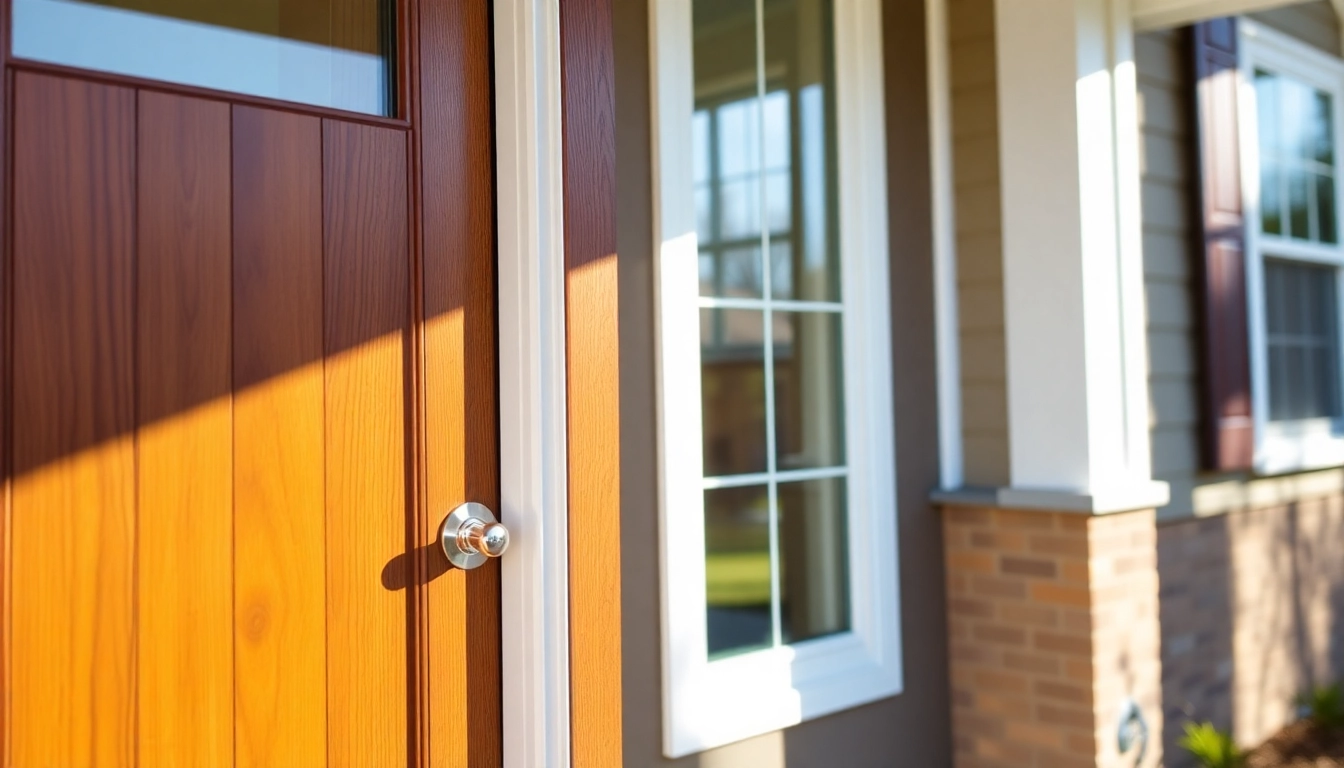Understanding the Role of a Siding Contractor
What Does a Siding Contractor Do?
A siding contractor specializes in the installation, repair, and replacement of exterior siding on residential and commercial buildings. Their expertise encompasses a broad understanding of various siding materials, building codes, and best practices for ensuring durable, weather-resistant, and aesthetically appealing exteriors. From initial assessment to project completion, siding contractors manage every phase of the siding process, including surface preparation, material selection, proper installation techniques, and post-installation inspections.
A typical siding contractor begins with a thorough inspection of the existing exterior to identify damages, structural issues, or underlying problems that could affect the siding’s integrity. Based on these evaluations, they recommend suitable materials and design options tailored to the client’s preferences, climate considerations, and budget. Their responsibilities also include acquiring necessary permits, ensuring compliance with local building regulations, and coordinating with other trades if needed.
Beyond new installations, siding contractors frequently handle siding repairs, addressing issues such as cracks, warping, rotting, or pest infestations. Their goal is to restore and enhance the exterior’s durability and appearance, often extending the lifespan of the building envelope.
If you’re seeking a dedicated siding contractor to elevate your home’s curb appeal and provide long-term protection against the elements, choosing an experienced professional can make all the difference. Their technical expertise, industry connections, and adherence to quality standards ensure a job well done and peace of mind for years to come.
Why Hire a Professional Siding Contractor?
Engaging a professional siding contractor offers manifold advantages over DIY approaches or unqualified labor. First and foremost, expertise and experience are critical in ensuring that siding is installed correctly, minimizing potential issues such as water infiltration, gaps, or uneven finishes that could compromise the building’s structural integrity.
Professional contractors possess in-depth knowledge of different siding materials—including vinyl, fiber cement, cedar, and metal—and understand the specific installation requirements for each. This mastery translates into efficient workmanship, adherence to manufacturer specifications, and the ability to troubleshoot unforeseen challenges on-site. Their craftsmanship results in a seamless look and ensures that the siding performs optimally for decades.
Supply chain relationships also matter—reliable siding contractors have access to high-quality, industry-standard materials at competitive prices, which can ultimately save you money. Furthermore, licensed and insured contractors provide legal protection and guarantees, giving you confidence that your project is compliant and backed by warranties.
Additionally, professional siding installation can enhance the energy efficiency of your home, contributing to lower heating and cooling costs. Properly installed siding acts as an insulative barrier, reducing drafts and heat loss. Their comprehensive approach includes proper flashing, ensuring the building remains weatherproof and protected from moisture damage.
Ultimately, hiring a qualified siding contractor ensures your home’s exterior is not only visually pleasing but also resilient against environmental stresses, saving you money and effort on repairs down the line.
Common Types of Siding Materials Offered
Modern siding contractors offer a diverse array of material options, each with unique characteristics, benefits, and considerations. Understanding these can help homeowners make informed decisions aligned with their aesthetic preferences and functional needs.
Vinyl Siding
Vinyl siding remains one of the most popular choices due to its affordability, low maintenance, and wide range of colors and styles. It’s highly resistant to pests, rot, and weather, making it suitable for various climates. Modern vinyl siding features improved durability and realistic textures that mimic wood or stone.
Cedar Siding
Known for its natural beauty and insulating properties, cedar siding offers a timeless aesthetic with a warm, inviting appearance. It is prone to rot and pest damage if not properly maintained but can be treated or stained to extend its lifespan.
Fiber Cement (Hardie Board)
Hardie siding, a leading fiber cement product, combines durability with fire resistance and environmental sustainability. It’s available in various styles, including shingles and planks, and resists issues like cracking, warping, and pests. Its long lifespan makes it a popular premium choice.
Metal Siding
Metal siding, often made from aluminum or steel, provides a sleek, modern look and outstanding durability. It’s highly resistant to moisture, pests, and fire, but can be prone to denting and corrosion if not properly coated.
Other Materials
Additional options include stucco, brick veneer, and composite materials, each suited for specific architectural styles and environmental conditions. An experienced siding contractor can help you evaluate these alternatives based on your project requirements.
Choosing the Right Siding for Your Home
Comparing Vinyl, Cedar, and Hardie Board
Selecting the ideal siding material requires a careful assessment of durability, maintenance, aesthetics, and cost. Here’s a comparative overview of popular options:
- Vinyl Siding: Cost-effective, low maintenance, and versatile; suitable for homeowners seeking a wide range of styles and colors.
- Cedar Siding: Natural appearance, excellent insulative qualities, but requires regular upkeep and treatment to prevent decay.
- Hardie Fiber Cement: Offers a balance of durability, aesthetic flexibility, and minimal maintenance; ideal for those wanting a long-lasting material with a traditional or modern look.
Factors to Consider: Climate, Budget, Style
Your choice should align with your local climate, architectural style, and budget constraints:
- Climate: In high humidity or coastal areas, corrosion-resistant metal or fiber cement is preferred. Mild climates can accommodate cedar or vinyl more comfortably.
- Budget: Vinyl remains the most affordable, while fiber cement and premium wood options incur higher costs but offer increased longevity and aesthetic appeal.
- Style: Modern designs may favor sleek metal or fiber cement, whereas traditional homes often look best with cedar or clapboard vinyl siding.
Design Trends and Curb Appeal Enhancements
Keeping up with current design trends can boost your home’s curb appeal significantly. Popular enhancements include:
- Using contrasting trim colors to highlight architectural features.
- Incorporating textured siding for visual interest.
- Combining different materials, such as stone and siding, for a layered effect.
- Installing vertical siding to add height and dimension.
- Choosing bold, contemporary colors that reflect personal style and increase property value.
Steps in the Siding Installation Process
Initial Inspection and Consultation
The process begins with a comprehensive assessment of your current exterior, including checking for structural damage, moisture issues, and the condition of existing siding. During this phase, the siding contractor discusses your goals, budget, and preferred materials, providing professional advice based on expertise and experience.
Accurate measurements and detailed project scope are established, along with a clear timeline and budget estimate. This stage is essential for ensuring mutual understanding and setting expectations.
Preparation and Material Selection
Proper preparation involves cleaning the surface, removing old siding if necessary, and repairing any underlying structural issues. The contractor then helps you select suitable materials, factoring in functionality, aesthetic appeal, and budget considerations.
Ordering quality materials ensures durability and a seamless installation. This phase also includes obtaining necessary permits and scheduling the work to minimize disruptions.
Installation, Inspection, and Cleanup
Skilled installation is crucial for a long-lasting result. The contractor follows manufacturer guidelines and best practices, ensuring proper layering, flashing, and sealing to prevent moisture intrusion. During installation, the team monitors for quality control and adherence to safety protocols.
Once complete, a thorough inspection verifies that all components are correctly installed and functioning as intended. The site is cleaned, debris removed, and final walkthroughs are conducted to ensure client satisfaction and to address any concerns.
Cost Factors and Budgeting for Siding Projects
Average Costs of Siding Installation
Siding installation costs vary widely based on material choice, home size, and regional labor rates. As a rough benchmark:
- Vinyl siding generally costs between $2.50 to $7.00 per square foot, including labor.
- Hardie fiber cement siding ranges from $10 to $13 per square foot installed.
- Cedar siding can cost between $5 to $10 per square foot, depending on treatment and finish.
- Total project costs for an average-sized home (around 2,000 sq ft) typically fall between $10,000 and $40,000.
How to Get Accurate Quotes
To ensure precise budgeting, obtain multiple detailed quotes from licensed siding contractors. These should include itemized costs for materials, labor, permits, and any additional work. Be wary of significantly low bids, which may indicate subpar materials or inadequate workmanship.
Providing detailed measurements, photos, and project descriptions facilitates accurate estimates.
Tips for Saving on Your Siding Project
Strategies to reduce costs without compromising quality include:
- Scheduling work during off-peak seasons for better rates.
- Choosing moderately priced yet durable materials like high-quality vinyl or composite siding.
- Combining siding replacement with other exterior upgrades to streamline labor costs.
- Maintaining open communication with your contractor to avoid unforeseen expenses.
Maintaining and Repairing Siding Long-Term
Routine Maintenance Tips
Proper upkeep preserves siding’s appearance and integrity. Key maintenance practices include:
- Regularly cleaning siding with gentle soap and water or a power washer on low setting.
- Inspecting for loose, cracked, or damaged panels and addressing issues promptly.
- Applying protective coatings or stains on wood siding to prevent weathering.
- Trimming nearby vegetation to prevent moisture retention and pest intrusion.
Signs You Need Siding Repairs
Early detection of problems can prevent costly repairs. Watch for:
- Visible cracks, holes, or warping.
- Faded, discolored, or peeling paint.
- Moisture stains or mold growth.
- Pest activity or insect damage.
- Loose or missing panels.
Choosing a Reliable Siding Contractor for Repairs
When repairs are necessary, selecting a trusted contractor is essential. Look for licensed, insured professionals with solid reviews and proven experience in siding repairs. Request references and inspect previous work samples before committing. Timely repairs by qualified contractors can extend the lifespan of your siding and maintain your home’s value.


